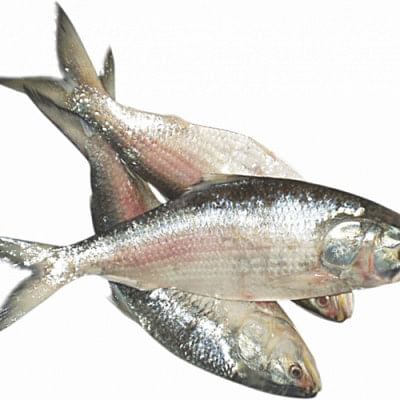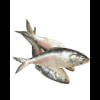Hurrah for hilsa, again

The country now has another success to hail about Padma hilsa as the research on its genome sequence got international recognition, a year after the fish had secured the status of geographical indication (GI) product of Bangladesh.
BioMed Central, a UK-based journal, published the work of a team of Bangladeshi researchers who decoded the genome sequence of the fish in September last year.
“This is our primary publication on hilsa's genome sequence,” said Mong Sano Marma, one of the researchers. “This is the first publication in a well-known journal about the full genome sequence of hilsa.”
Hilsa, the national fish of Bangladesh and an integral part of culture in this region, was certified as a GI product of Bangladesh in 2017 after Jamdani sari.
Bangladeshi scientists working in three continents joined hands and decoded the genome of Padma hilsa, paving the way for knowing the unknown aspects of its life, including the ability to survive in sea and fresh water.
They now consider it as a matter of pride to have their research published in a world renowned journal as Bangladesh is the first among the countries working on hilsa genome to have this recognition.
Led by Prof Haseena Khan of Dhaka University, the research team also includes Prof M Niamul Naser of DU zoology department, and Prof Mohammad Riazul Islam and young researchers Avizit Das, Oly Ahmed, Tasnim Ehsan and Rifath Nehleen of biochemistry and molecular biology department at DU.
Dr Peter Ianakiev, a polish national, also the neighbour of Dr Mong in the US, facilitated the genome sequencing at his research organisation for free.
The bioinformatics analysis of the huge data was done by AKM Abdul Baten, a Bangladesh-origin bioinformatician who used to work at the Southern Cross University in Australia at the time.
Talking to The Daily Star yesterday, Prof Haseena said Bangladesh got this recognition through different phases and process.
They first submitted their research data to the website of GenBank sequence database and the GenBank verified all the information.
“After their verification, we submitted the paper to BMC in October last year and they also took time to check and re-check the information. On December 22, they contacted us and informed that they have published our research,” Prof Haseena said.
BioMed Central published the article titled “Genome of Tenualosa ilisha from the river Padma, Bangladesh”.
As the journal has open access, anyone can now read or know about this research of Bangladesh, the professor said, adding that it will also help the researchers who will work on hilsa in future.
Prof M Niamul, who has long researched hilsa, said it is a proud recognition for Bangladesh.
“Different countries like India, Myanmar, China, and Malaysia are working on the genome sequence of hilsa but the Bangladesh's research got the first recognition. Thus Bangladesh moved a step forward in hilsa research,” he added.
The researchers believe this genome sequencing will help unlock the mysteries of Padma hilsa -- what makes it taste better than sea hilsa, why does this silvery fish come to the river from the sea for spawning and then go back to the sea and how do they survive in both conditions.
The genome contains all the heredity information of any living being encoded in the molecules of deoxyribonucleic acid or DNA. Genome sequencing, therefore, means reading all the secrets of the life of a particular species written in its DNA.
The project began on September 10, 2017 and the samples were collected by September 22.
The researchers collected hilsa samples from seven different habitats -- deep sea, Meghna estuary, Padma-Meghna estuary, Jamuna, Brahmaputra, upper Padma and Hakaluki Haor.
Dr Mong, a Bangladesh-origin biotechnologist based in the US, wrote in Facebook page that they have decoded the genome sequence of hilsa -- both from sweet water and sea water -- profiling their gene expression so that it may unearth how hilsa can survive in both the conditions.
Prof Haseena said their initial data analysis revealed that there are 31,295 genes in Padma hilsa's genome.
After a year-long communications, detailed planning and coordination among the scientists and weeks of work using powerful computers to interpret a large dataset, the DNA samples along with the RNA from different organs of the collected fish were sent to the lab in the US on January 11 last year.
A day after The Daily Star ran a report on genome sequencing on September 7, another group claimed to have achieved the same feat.
Prof Dr Samsul Alam of Department of Fisheries Biology and Genetics at Bangladesh Agricultural University (BAU), also coordinator of the research team, revealed the matter through a press conference on the campus.
“BAU started the research in December 2015. After three years of work, we have finally disclosed the matter on genome sequencing of hilsa,” he said.
However, in a press release, the BAU team mentioned that they were yet to estimate the number of genes present in the hilsa genome. “The estimation of the number of genes and their characterisation is going on.”

 For all latest news, follow The Daily Star's Google News channel.
For all latest news, follow The Daily Star's Google News channel. 








Comments